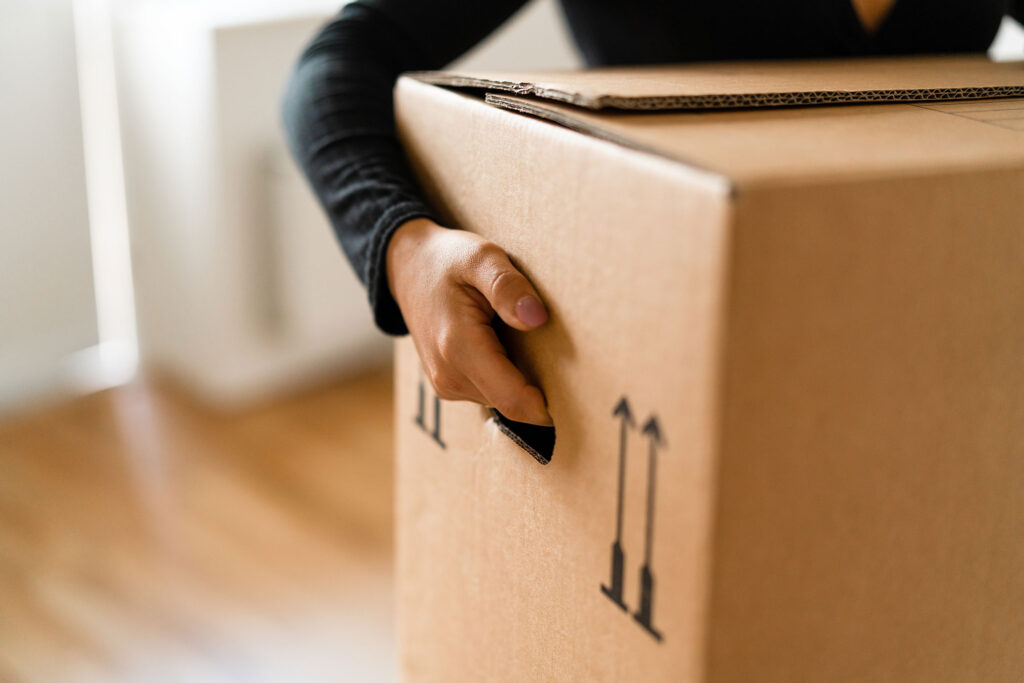7 Things You Must Do Before a Big Move, According to an Organizing Expert
Plus, the first thing to do in your new home.

Let me paint a picture of my current living situation: I’m surrounded by moving boxes, and my 16-month-old is wondering why they’ve swallowed up all of his toys and books. My husband and I are completely overwhelmed, which meant it was time to call up my go-to organizational guide, Amanda Titchenal, founder of full-service organizing firm Well Organized.
“A move gives you the opportunity to start fresh in a new home,” she says. Below, Titchenal shares how she and her team prepare their clients for a big move.

Luza Studios/Getty Images
1. Start early, and start easy.
As soon as you have a move-in date, the purge begins. Titchenal says to go through each room in your home, starting with the “easy spaces,” like laundry rooms and linen closets. From there, you’ll work your way up to tackle the bigger, more essential areas such as the garage and kitchen. The reason for this is two-fold: There’s less to purge or toss in the “easy” spots, and you’ll likely need to use rooms like your kitchen up until the day of your move. Memorabilia, or anything memory-related (think photos and other keepsakes) will take up a lot of time, too.
“Memorabilia can bog you down, so we’ll often have clients box up all of it together or put it into a few boxes or bins to be handled on the backend,” she says.
2. Only move what you want to go to your new house.
“Purge as much as you can before you pack,” Titchenal says. “Otherwise, you’re unpacking and moving stuff that you don’t need, and it’s just a waste of time. We usually set up a few boxes or bags right next to the ones we’re packing for donated items or anything that should go in the trash. It also cuts down on the cost of moving, because you’re not moving as much stuff.”
If you don’t have time to complete this purging process, you can box up your belongings and make note of the boxes you’ll need to review as you’re unpacking.

Courtesy of Amazon
3. Order more moving supplies than you think you’ll need.
Similar to the amount of time you’ll dedicate to this project, a move requires more materials than you’d expect. “People will get a bundle of 20 boxes and think they’re good,” Titchenal says. “We usually use 100-200 boxes per house.”
Titchenal says she typically purchases moving boxes from places like The Box Zone or U-Haul, but there are also companies who will rent out reusable bins for short-term use.
“They’re more expensive than moving boxes, but they’re eco-friendly and a little more effective because you don’t have to spend time assembling them and you don’t have to pay for trash removal because they pick them up when you’re done,” she says.

Courtesy of Amazon
4. Color-code everything.
Titchenal and her team have a specific labeling system, but you can follow the basic principles: Give each room a specific color, which you can identify with a marker and painter’s tape or a label specific to each room.
“You want to pack it for the new space, so that it gets to the right room,” she says. “The color system works really well, especially if you are using a moving company, because then they know everything pink goes to the nursery, everything blue goes to the family room, everything green goes to the kitchen, and so on.”
This practice extends to furniture as well, and Titchenal recommends tagging each item with the coordinating room color.
5. Hire a junk removal company at both properties.
You want to hire a company to dispose of anything you need to purge in your current home, plus any of the boxes or other trash remaining after your unpacking phase. Titchenal suggests scheduling this on the last moving day or one day after you’ve moved, and then it depends when it comes to your new home.
“Say you’re moving on a Friday,” she says. “You could have them pick up for Monday, so you have the weekend to get a lot done. And then maybe set another one for two weeks from then, just in case you need more time to unpack.”

Yellow Dog Productions/Getty Images
6. Know when it’s time to call in the pros.
“It’s a lot of work for two people to do, so if you don’t have time, consider hiring an organizing expert,” Titchenal says. “When we do moves, we usually pack a whole house anywhere between one and three days.”
7. Unpack the essential spaces first.
Here’s one bonus tip for unpacking and settling into your new home, and it connects to the order in which you packed. While you ended your packing up experience with “essential” rooms like bedrooms and kitchens, you’ll want to kick off the unpacking with those spaces.
“It’s helpful to mark certain boxes with something like, ‘Unpack me first,’” Titchenal says. “That way, if you can’t get to your whole kitchen right away, for example, at least you’ll know where to find the things you’ll really need.”
We only recommend things we love. If you buy something through our site, we might earn a commission.